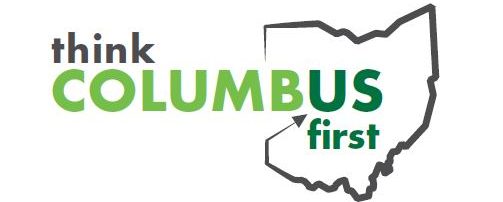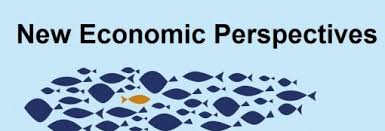
MMT Economics Offers Key to Funding New Economy and Green, Progressive Agenda
by Chuck Lynd
Do you see the goldfish swimming upstream in the logo above? That’s MMT, or Modern Monetary Theory. They are the Young Turks advocating a new (sort of) approach to macroeconomics. They are knocking on the doors of academics and policy makers who are guarding the economic gates of a system that is failing us and in serious need of fiscal repair. Swimming upstream can be tiring and frustrating. We must remember Gandhi’s wise counsel.
First they ignore you, then they laugh at you, then they fight you, then you win. ~ Gandhi (who won India from the British empire)

Gandhi’s dictum sums up the process of social change, whatever the cause. The great majority of people, in the US and around the globe, have suffered under the established neoclassical approach to economics for decades. The good news is that a new approach is in the wings, challenging the status quo in academia and in government policy as well.
The arrival of this new approach comes at a most propitious moment. Public awareness that economic globalization is the root cause of multiple social problems has entered the mainstream through the US presidential campaigns of Donald Trump and Bernie Sanders and Britain’s vote to leave the European Union. The promise of “free trade” of goods and services to support a worldwide consumer society has turned sour. Ordinary people, the 99% as we now say, are waking up to the downside of so-called Trade Agreements:
1) outsourcing of jobs, first blue collar, then white collar, to ever cheaper labor markets;
2) appropriation of local food and retail markets by large transnational corporations; and
3) a banking system that invests our deposits in the global financial casino of speculation and computer-speed commodity trading.
We didn’t vote for this new global economy but every city and town that lost high wage, union jobs when their industries moved overseas are now feeling the effects. The new “service economy” based on low wage jobs, cheap food and consumer goods leaves many people feeling, as Thom Hartmann’s book bluntly proclaimed, Screwed.
When 62 human beings own as much wealth as 3.5 billion human beings, it’s clear to most people that the “system is rigged” in favor of our corporate and financial elites. When Corporations Rule the World, as David Korten’s book announced in 1995, there are serious consequences. This is not the place to review the state of the world’s social, political, and economic problems. Suffice to say that economic globalization, driven by the financialization of capital markets, has created a radically new world that works very well for a tiny minority of moneyed elite and perhaps 10% of what Thomas Frank calls the Liberal Class, comprised of college educated professionals.

As Margaret Thatcher famously said, There Is No Alternative, or TINA. Both Liberal and Conservative political parties have fallen under this spell of inevitability. Neoliberal economics and neoconservative foreign policies have joined to create what Mike Laughlin calls “The Deep State.” It chugs along despite the fact that politicians argue on the surface about how and whether governments can regulate corporate behavior as it seeks to privatize every aspect of the Commons in the name of Efficiency. Conservative economists promote austerity policies (limited government, tax cuts for the wealthy) that that effectively strip away government’s role in providing social welfare services. Liberal economists promote government regulations and services that offer relief to individuals and communities impacted by job loss, poverty, lack of health care, etc. The drama of conservative deficit hawks versus liberal deficit doves plays out in the larger context of TINA and the Deep State. Corporations continue to dominate the global economy and foreign policies (backed up by the military industrial complex) ensure the free flow of capital, goods, and services.
All this plays out in the larger context of climate change. Economic globalization is now exploiting the earth’s resources at a rate approximately 1.6 times the regenerative capacity of the earth’s ecosystems. Borrowing against the future is not sustainable for much longer as excessive CO2 in the atmosphere warms the land and oceans of the planet. Even the corporations’ own economic institutions – the World Bank and International Monetary Fund (IMF), warn that the present course is unsustainable. The World Bank cautions that at least 50% of fossil fuel reserves must be left in the ground. The IMF warns that income inequality caused by the current funneling of profits to the tiny moneyed elite threatens the long term ability of corporations to market their products to populations unable to afford them. These warnings have been largely ignored as CEOs and the Investor classes continue to focus on quarterly growth and market share.
How does this system continue despite these increasingly obvious flaws? David Korten explains this paradox in his recent book, Change the Story, Change the Future: A Living Economy for a Living Earth. Very briefly, we have bought into what he calls “The Sacred Money and Markets“ story.

“Money, it tells us, is the measure of all worth and the source of all happiness. The market is omniscient. Earth is simply a source of raw materials. Inequality and environmental destruction are unfortunate but unavoidable. Although many recognize this story promotes bad ethics, bad science, and bad economics, it will remain our guiding story until replaced by a more compelling story that aligns with our deepest understanding of the universe and our relationship to it.” ~ David Korten (emphasis mine)
Korten outlines his Sacred Life and Living Earth story, arguing that contemporary science, from cosmology to the evolution of life forms, affirms that “we are living beings born of a living Earth itself born of a living universe.” This grounding supports Korten’s brilliant link to a new story for a new economy that works with and within nature’s ecosystems. Korten offers a hopeful vision that may sound impractical because it contrasts so sharply with our current worship of money and belief in the magical “invisible hand” of market forces. In fact, here and in his overall body of work, Korten offers a practical, actionable agenda for a new global economy based on strategic, worldwide, internetworked, localization of economic development.
Korten’s “new story” is being implemented locally through networks that are proactively rebuilding and revitalizing cities, towns, and neighborhoods through local food councils, buy local and bank local campaigns, and creating local investment opportunities that support local entrepreneurs as the primary job creation strategy. Localization is a systemic, solutions multiplier that simultaneously lowers carbon emissions, encourages democracy by making policies more accountable, provides more secure livelihoods, all while offsetting the negative impacts of economic globalization.
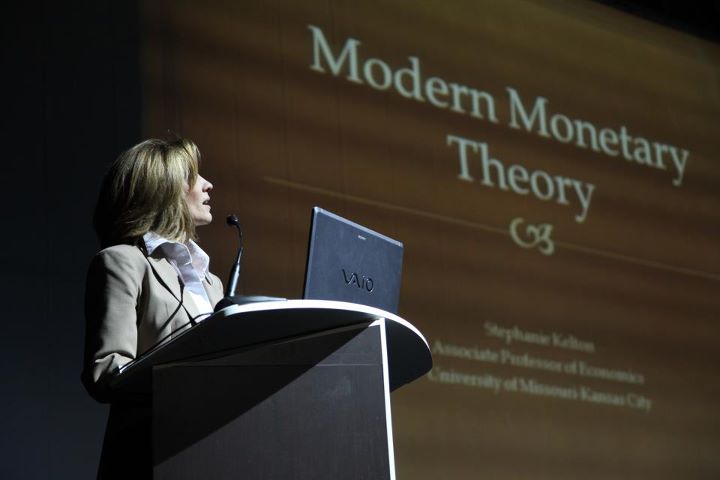
The Missing Piece: Modern Monetary Theory (MMT)
The problems we face today in the United States, the world’s richest nation, seem insurmountable. Who can count all the good causes that require funding in order to address poverty, climate change, terrorism, money in politics, environmental degradation, species extinction, renewable energy, prison reform, health care, childcare, on and on. Yet we are told by the economic establishment that at worst there is no money available, and at best we are constrained by the sheer volume of causes demanding complex, time consuming regulations and legislation that each require a battle to get even partial funding.
Enter MMT, or Modern Money Theory. MMT has deeper roots than will be discussed here, but it offers a post-Keynesian, macroeconomic approach that integrates the missing fiscal piece capable of freeing public investments to benefit the “99 per cent.” The current fiscal policies, by design, benefit private sector transnational corporations and mega-banks.
MMT, also called “Functional Finance,” uses basic accounting principles to clarify the government’s role in managing the money supply, especially as applied to the national debt and deficit spending. Politicians wedded to the current economic paradigm rail against the evils they claim will occur when the government spends more than it takes in as taxes. Liberal economists like Paul Krugman and Joseph Stieglitz differ only by degree when they call for temporary deficit spending when unemployment in the private sector job market reaches a threshold judged to be unacceptable. Both “supply side” and Keynesian economists share the goal of balancing the budget.
MMT economists explain that balancing income and spending apply to individuals, families, businesses, and state governments, but NOT to the Federal government. The issuer of currency (applies equally to entities that issue local currencies) can never run out of money because it can always print or mint more dollars, pesos, rubles, yen, etc. MMT points out that when accounting for government debt, every dollar of debt that dips below the line representing a balance of revenue and spending is offset by assets that are held by those who received the dollars, i.e., corporations and banks. Further, MMT economists argue that it is usually sound policy for the Federal government to allow and even encourage deficit spending.
The MMT economists are offering a paradigm shift in economics. Their relationship with mainstream economists reflects Gandhi’s dictum: they have been ignored, they have been ridiculed, and it is fair to say that there Is now an intellectual fight for the soul of the discipline. For those interested in more details about the MMT approach, including criticism from other economists, the Wikipedia entry provides many useful references. For a layman-friendly overview, see Free Money: Plan for Prosperity, by Roger Maxwell Mitchell.
MMT economists differ in their views and policy recommendations, but they agree that the fiscal policies of the U.S. Treasury must be consolidated and coordinated with the monetary policies of the Federal Reserve to manage the economy effectively. Most believe that the Treasury can issue a greater percentage of currency (only about 3% today) without creating new money from debt controlled by the private sector. This approach is anathema to most mainstream economists, who argue that the temptation to print too much currency without debt will lead to inflation.
The MMT economists are chomping at the bit to prove them wrong, and they are joined by advocates of the public banking movement, led by Ellen Brown, author of Web of Debt. The state bank of North Dakota offers a model , since 1916, of how banks can serve the public interest through times of economic boom and bust. Their well documented success is now being studied for potential replication in a number of cities and states, including California.
If a state bank can work alongside private sector banks, imagine how much greater the impact might be if the Federal government, the sovereign issuer of currency, could begin to increase public investments in developing renewable energy, infrastructure improvements, and employment programs? These investments would be similar to recent stimulus packages proposed under President Obama during the Great Recession, but they could be implemented on a much larger scale and could be publicly financed without creating funds from debt to be paid back with interest. Franklin Roosevelt’s New Deal offers a somewhat similar model, in that the Federal Reserve was used to create low interest loans for small farmers and business owners during the Great Depression.
Many MMT economists offer what they call a Jobs Guarantee (JG) program designed to address the problem of poverty directly and, indirectly, the extremes of income inequality that we are now experiencing in the US and around the world. The JG program offered by MMT economists differs from most Federal programs that are provided by government agencies and usually focus on job training.
MMT style JG proposals are funded Federally but offered locally through the nonprofit sector. The economy is divided into the private sector, public or government agency sector, and the nonprofit sector. By design, the JG proposals kick in only when the private and public sectors are not able to provide jobs for those who are willing and able to work. Nonprofit organizations are focused on community based needs and have the capacity to hire but lack the funds to do so. When the unemployment rate (including those who are underemployed and have given up their job search) rises above a certain level (4% is typical) then Federal funds are made available to nonprofits on an application basis. When private sector employment expands businesses can hire from the public and nonprofit labor markets.
The nonprofit sector is not small or negligible in relation to the overall economy. Roughly 1.6 million nonprofits account for 11.4 million jobs, 10.3 percent of all private sector employment, and contribute about $880 billion dollars to the economy, or about 5.5% of G.D.P. Building the capacity of these organizations to innovate, develop social enterprises, and increase services where needs are critical is a strategy that is attractive across the political and ideological spectrum.
Note that the JG program funds are used to employ individuals, not train them in the hope that private sector companies will hire them after a new skill is learned. Inspired by the work of Hyman Minsky, who argued, during Lyndon Johnson’s Great Society programs, that providing a job with a living wage, regardless of skill level, will address head on all the problems associated with poverty: crime, housing, diet-related health problems, drug and alcohol addictions, divorce rates, abortions, school dropout rates, etc.
Surprisingly, net cost projections for JG programs, even when based upon hourly wages of $15, $18, and $21, are in the modest range of $7-800 billion dollars. While costing about the same as a government economic stimulus program, significant cost reductions can be anticipated as poverty rates decline. There will be less need for public sector social welfare programs that address the symptoms of poverty: crime, housing, health, etc.
MMT economists and their fiscal policies, even more so when combined with public banking alternatives, offer the potential to address all aspects of the progressive agenda – poverty, rebuilding of our transportation infrastructure, transitioning to 100% clean energy, investing in neighborhoods that have been neglected for decades, cleaning up brown field sites, transforming our industrial food system and implementing agro-ecological practices that support carbon sequestration and policies designed to revitalize local, organic, farms serving local cities and towns.

This agenda is supported by large majorities of the American people and is essential if we are to address climate change. The recent Democracy Movement is leading efforts to reclaim our political process, free of excessive money and lobbying interests. The time is right for systemic change, and our economic and financial systems are key to real success in the timeframe that is needed – two decades? Perhaps three.
The MMT approach to economics is hiding in plain sight. Stephanie Kelton, chair of the economics department at the University of Missouri Kansas City, is a leading spokesperson for the movement. She has appeared on dozens of talk shows, media outlets, and debate forums in university settings. She is the chief economist advising the Bernie Sanders campaign, which will continue to promote the “progressive agenda” as outlined above. Kelton’s website, neweconomicperspectives.org, hosts a blog that includes contributions from MMT economists around the world.
A modest shift to local investment capital that supports our local food and retail economies has begun, thanks in large part to the work of visionary initiatives like the Business Alliance for Local Living Economies, the Slow Money and Slow Food movements, and now the Public Banking Institute. It is noteworthy that the dominant “supply side” economic agenda that has been tested internationally through neoliberal globalization is finally being questioned, challenged, and judged as a failure by an expanding chorus of critics from Naomi Klein to Pope Francis. The need for systemic change is underscored by the imminent threat of climate change, as documented by scientists and, despite huge disinformation campaigns funded by the fossil fuel industry, all major environmental organizations now call for dramatic increases in government investment in both environmental and social justice programs.
As Victor Hugo famously said, Nothing is more powerful than an idea whose time has come. Is the MMT approach to economics an idea whose time has come? Not all MMT economists support local economic development or focus on sustainable development policies. However, their approach to public finance and advocacy of alternatives to debt-based money creation could be the mechanism that unlocks needed capital investments that could be directed to local economic development and green infrastructure projects. The time has come for the Localists and the multiple threads being woven together in the New Economics Coalition to join forces with a new fiscal engine capable of driving their progressive, sustainable agenda.
MMT Resources for Advocates of Local Economic Development
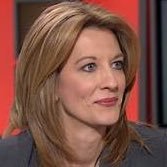
Stephanie Kelton, Chair of the Economics Department at the University of Missouri, Kansas City, is a leading proponent and spokesperson for MMT (Modern Monetary Theory) She has been interviewed by business, finance, and economic publications and has made media appearances on MSNBC, Thom Hartmann, and many others. She is the founder and editor of the blog, NewEconomicPerspectives.org, which publishes articles and commentary by and about the leading MMT economists. Kelton is the chief economic adviser to the Bernie Sanders campaign, and serves as the chief economist for the Democratic staff of the Senate Budget Committee. For a brief article about MMT and the Sanders campaign, see http://neweconomicperspectives.org/2015/11/mmt-and-bernie-sanders.html taken from an interview with Randall Wray. To get a basic overview of MMT I recommend listening to a Youtube video, The “Angry Birds” Approach to Understanding Deficits in the Modern Economy: https://www.youtube.com/watch?v=d57M6ATPZIE. The production value is low but the video clip of politicians from both parties railing against the debt and trade deficits (the “Angry Birds”) is excellent. You can follow her work and media appearances on her website: StephanieKelton.com.
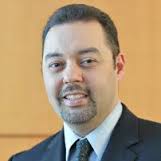
Binzagr Institute for Sustainable Prosperity at Denison University in Ohio is led by Fadhel Kaboub. Dr. Kaboub organized a national conference in the Fall of 2015 and has established the Institute as a research and policy think tank for MMT economics. The website <http://www.binzagr-institute.org/> offers a diverse selection of publications ranging from working papers, policy notes, a newsletter, and a Vlog (Video blog) series by Matthew Forstater that offers a clear explanation of MMT principles. See especially these papers related to MMT-based Jobs Guarantee (JG) proposals, investment in green infrastructure, and public banking options.
Federally Funded, Locally Organized: An Affordable Job Guarantee Program
JG: http://www.binzagr-institute.org/working-paper-no-108/ by Will Fogarty
“JOBS FOR ALL”: Another Dream of the Rev. Dr. Martin Luther King Jr.
JG: http://www.binzagr-institute.org/policy-note-110/ by Mathew Forstater
Completing the Roosevelt Revolution: Why the Time for a Federal Job Guarantee Has Come
JG: http://www.binzagr-institute.org/policy-note-108/ by Pavlina R. Tcherneva
Governments Can and Must Lead Climate Action via Public Investment
Green Infrastructure: http://www.binzagr-institute.org/policy-note-103/ by Matthew F. Hoexter
Postal Banking: Finance for Everyone
Public Banking: http://www.binzagr-institute.org/policy-note-104/ by Raúl Carrillo
The Public Bank Solution
Public Banking: http://www.binzagr-institute.org/policy-note-101/ by Ellen Brown

The Public Banking Institute was founded by Ellen Brown in 2010 to further the understanding and implementation of public banks. Brown, an attorney and author of Web of Debt, began researching alternatives in the banking/financial sector that might empower regional governments, Main Street, and the middle class against the ruthless hegemony of Wall Street and the big banks. See their website <http://www.publicbankinginstitute.org/> to learn about the success of the State Bank of North Dakota and other cities and states exploring public banking alternatives. See especially their What Wall Street Costs America Campaign. Follow Ellen Brown on her own website: https://ellenbrown.com/
###
Chuck Lynd serves as the Steering Committee Chair of the Support Our Local Economy (SOLE) Coalition. Comments and recommendations are welcome. Email Chuck.Lynd@gmail.com.
